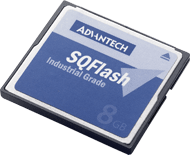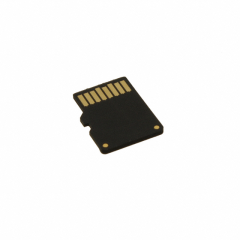Flash Memory Cards Information



Image Credit: Advantech Co., Ltd. | Digi-Key Corporation | Wintec Industries, Inc.
Flash memory cards provide electrically erasable, programmable, read-only memory (EEPROM) for use in industrial and consumer applications. Flash memory is non-volatile, which means that it does not need a constant power supply in order to retain data. Flash memory cards offer extremely fast access times, low power consumption, and relative immunity to severe shock or vibration. They have a lifespan of approximately 100,000 write cycles - a fact that makes Flash unsuitable for use as computer main memory. Typically, Flash memory cards are used in portable or compact devices such as digital cameras, cell phones, pagers, and scanners. They are also used as solid-state disks in laptops and as memory cards for video game consoles.
Form Factors and Size
Flash memory cards are available in different form factors, a product specification which describes both size and pin configuration. The cards have many different interface security, and storage options which vary depending on the manufacturer and card type. Flash memory cards are available with different amount of memory ranging from a few megabytes to many gigabytes.
Performance Specifications
Performance specifications for Flash memory cards are set by the type of card and the manufacturer. They include capacity, clock speed, and cycle time. Features include basic parity, error-checking parity, or non-parity. Cycle time is the minimum amount of time that Flash memory cards need to complete a cycle such as read, write, read/write, or read/modify/write. Basic parity is an error-checking procedure in which the number of 1s in a binary-sequence is always the same for each group of bits that are transmitted. Error-checking parity (ECC) adds a correction function to basic parity. Flash memory cards with non-parity are also available; however, these non-ECC modules do not have error-detection or error-correction features.
Memory Types
Flash memory cards differ in terms of memory types. Choices include Secure Digital (SD), Micro Secure Digital (microSD), and Miniature Secure Digital (MiniSD); CompactFlash ® (SanDisk) ; Memory Stick, Memory Stick Pro, Memory Stick Duo, and Memory Stick Micro; MultiMediaCard; DV-MMC, RS-MMC, SecureMMC, and MMCmicro; Smart Media; and xD-Picture Card. Solid state drives are devices that use solid state memory to store data. They have no moving parts. USB Flash drives are Flash memory drives that have a built-in universal serial bus (USB) interface for connecting to a USB port. Other unlisted Flash memory card types are also available.
